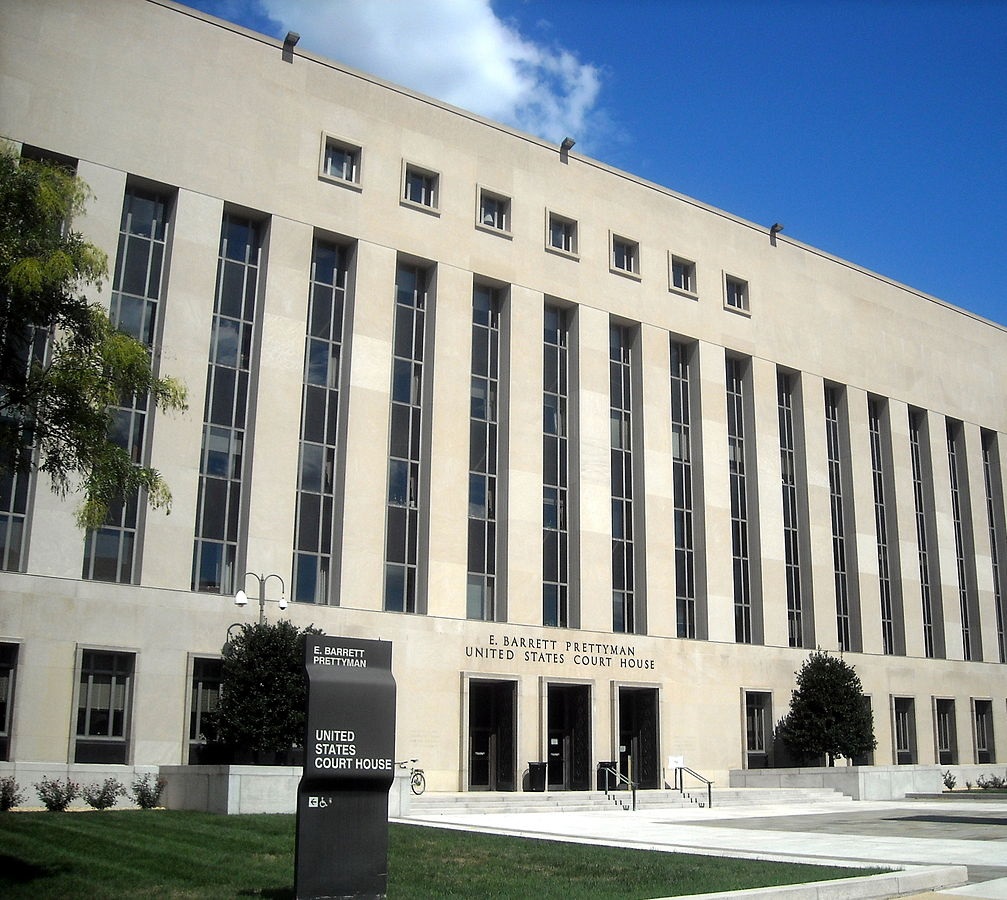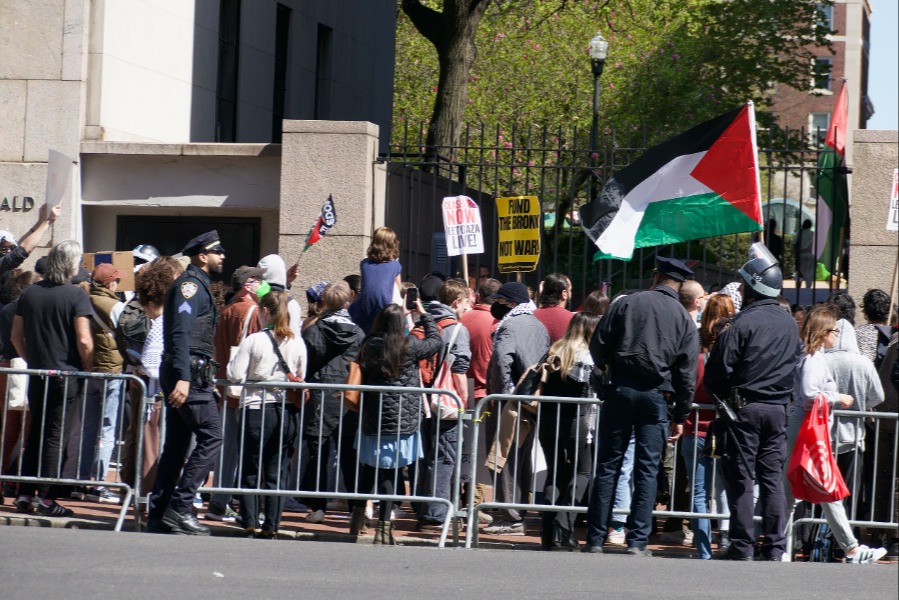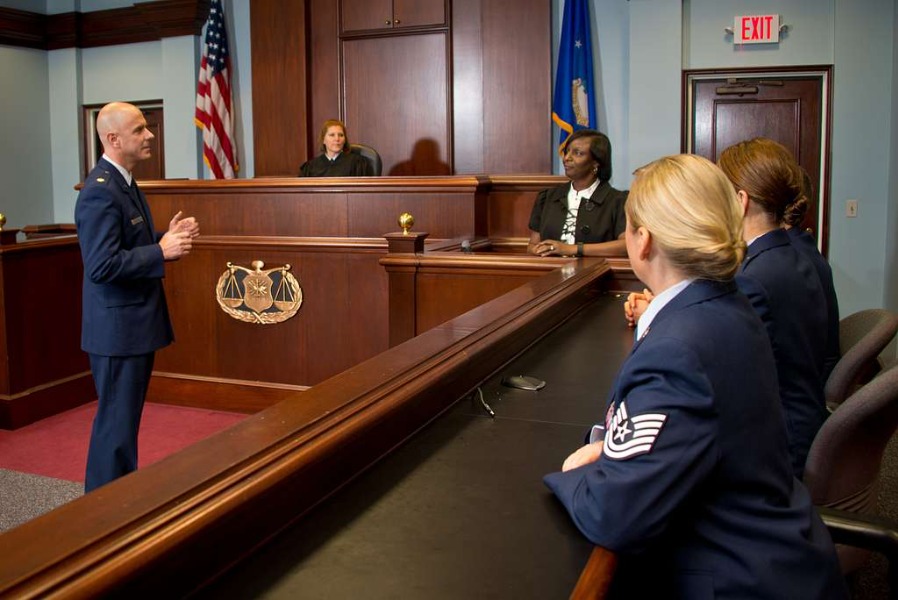Grand Jury Secrecy, Contempt and the McCabe Investigation
Andrew McCabe, the former deputy director of the FBI who was uncharitably fired the day before his intended retirement, has been under criminal investigation for more than a year—some say at the inappropriate insistence of President Trump. McCabe may recently have received a bit of good news.

Published by The Lawfare Institute
in Cooperation With

Andrew McCabe, the former deputy director of the FBI who was uncharitably fired the day before his intended retirement, has been under criminal investigation for more than a year—some say at the inappropriate insistence of President Trump. McCabe may recently have received a bit of good news. If news reports are to be credited, it is possible that the grand jury considering his case has rejected the government’s request to return an indictment. Since indictments are traditionally referred to as “true bills,” the refusal to return one is called a vote of “no true bill.”
But what is good news for McCabe may be bad news for federal prosecutors—not just because their failure would be nearly unprecedented but also because the public disclosure of the proceedings of a grand jury is illegal, and anyone who is responsible for that disclosure is potentially subject to either civil or even criminal contempt proceedings.
Let’s unpack this a bit.
Federal Rule of Criminal Procedure 6(e) is, in effect, a rule of grand jury secrecy. It provides, with certain limited exceptions, that grand jurors and attorneys for the government who are participating in a grand jury investigation may not disclose publicly any “matter occurring before the grand jury.”
In the main, this rule is a well-understood limitation on what government lawyers may say in public about the investigations they are conducting. It is part of the reason that “no comment” is the answer they give most frequently to inquiries from the press.
As the Supreme Court has said, grand jury secrecy serves a number of important societal values:
First, if preindictment proceedings were made public, many prospective witnesses would be hesitant to come forward voluntarily, knowing that those against whom they testify would be aware of that testimony. Moreover, witnesses who appeared before the grand jury would be less likely to testify fully and frankly, as they would be open to retribution as well as to inducements. There also would be the risk that those about to be indicted would flee, or would try to influence individual grand jurors to vote against indictment. Finally, by preserving the secrecy of the proceedings, we assure that persons who are accused but exonerated by the grand jury will not be held up to public ridicule.
To that end, the law takes the secrecy requirement sufficiently seriously that “knowing violations” of the secrecy rule by government attorneys (or, less frequently, grand jurors themselves or court reporters) may be punished as contempt of court. As with all such contempts, the court has the option of choosing to allege a civil contempt or to make a criminal referral.
***
Cases of great public significance are no stranger to allegations of violations of the grand jury secrecy rules. To cite one example from a seemingly bygone era, then-D.C. Mayor Marion Barry brought a civil complaint against the U.S. government alleging that Justice Department attorneys had leaked significant grand jury material to the press, prejudicially impugning his reputation. In that case, the U.S. Court of Appeals for the D.C. Circuit set out the standard for such a complaint—to initiate a contempt proceeding, the alleged victim (here Barry) would need to make out a prima facie case that Rule 6(e) had been violated. As the court put it: “It is generally understood that a prima facie case of a violation of Rule 6(e) (2) is made when ‘the media reports disclosed information about “matters occurring before the grand jury” and indicated that the sources of the information included attorneys and agents of the Government.’”
If a prima facie case is made out, then the court, according to the Barry court:
must conduct a “show cause” hearing to determine whether the Government was responsible for the pre-indictment publicity and whether any information disclosed by the Government concerned matters occurring before the grand jury. At this hearing, the burden shifts to the Government to come forward with evidence to negate the prima facie case. If after such a hearing the trial court determines that remedial action is warranted, it may order the Government to take steps to stop any publicity emanating from its employees.
In addition to the equitable relief of ordering the government to modify its behavior, the court is also authorized to impose contempt sanctions including, in at least one instance, an order to dissolve a grand jury and prevent it from proceeding further.
***
The construction of a “show cause” hearing on alleged violations is one that is fraught with potential for embarrassing or disrupting the prosecution. Even if, in the end, the claim is found to lack merit, the mere fact that a putative defendant can secure such a hearing is often a significant development, both legally and in the political sphere.
One example (with which I am personally and painfully familiar) involved allegations made by President Clinton and his team that the Office of Independent Counsel (OIC) Kenneth Starr had leaked grand jury information to the press. Twice, these claims were the subject of appeal to the D.C. Circuit. I was on Starr’s team at the time, and handling these leak allegations was one of my most significant responsibilities. If you pull up the old briefs on the matter, you’ll find my name on many of them.
The first time, the district court had found that Clinton had made out a prima facie case and authorized a show cause proceeding that was to include subpoenas to the OIC, limited depositions, and, in the end, testimony before the district court by the federal prosecutors. That court decided that a fully adversarial proceeding was inappropriate (as it risked too greatly the disclosure of even more grand jury material), and it remanded the case to the district court to consider other methods of inquiry (including, for example, an ex parte or in camera proceeding). In the end, to resolve this matter the district court appointed a special master to conduct an independent inquiry. Unless I missed some recent development, that in camera report by the special master remains under seal to this day.
The second complaint against Starr was even more substantial, arising from an apparent leak of information about the potential that Starr was considering a post-impeachment indictment of the president. In this instance, the district court went so far as to purport to appoint the Justice Department as the prosecutor of a criminal contempt case against the OIC (as well as one individual member of the OIC). On appeal, the court resolved the matter by “differentiat[ing] between statements by a prosecutor’s office with respect to its own investigation, and statements by a prosecutor’s office with respect to a grand jury’s investigation.” Only the latter, it concluded, were within the ambit of the prohibition on disclosing “matters occurring before the grand jury.” Or, to put it more bluntly, a prosecutor saying, “I want to indict the president after impeachment” was not a statement about something that had occurred before the grand jury. By contrast, saying, “I presented an indictment to the grand jury” or, even, “I will present an indictment next week” would reveal such a matter. In the end, in this case, the D.C. Circuit concluded that the information in the article in question was more in the nature of an investigative matter than a grand jury matter and vacated the district court’s decision to proceed with criminal contempt.
***
So, what does this mean today? If the news is to be taken at face value, there is a possibility that the grand jury investigating Andrew McCabe has returned “no true bill.” Would a news report to that effect be prima facie evidence that the government has violated Rule 6(e)?
Maybe. To begin with, as I read the reporting, the return of no true bill has yet to be confirmed explicitly. We can infer that fact from the publicly reported promise of an imminent indictment, the meeting of the grand jury, and the failure of any true bill of indictment to be publicly returned. Such an event, if it has occurred, and if it were publicly disclosed would clearly satisfy the first prong of the prima facie test for a violation of Rule 6(e). The presentation of a bill of indictment and the vote on it would manifestly be matters that occurred before the grand jury.
To date, the news articles are likewise ambiguous as to the second prong of the prima facie case—that the information disclosed was disclosed by an attorney or agent of the government. None of the news articles that I’ve read make such a claim explicitly. To be sure, it is a reasonable inference that government attorneys are the source of this information, as they are the only people likely to have the information in the first place. And that inference is probably enough to make out a prima facie case, whose proof standard is, after all, rather low.
And so, even at this juncture, it seems to me that the chief judge supervising the grand jury has grounds to inquire if she wishes to do so. The case for doing so will be stronger still if (or when) a more well-sourced news report is published. And in that case, the show cause proceedings will be interesting indeed.





